Hello, everybody! I am going to start a new series today. It is about the exhibit currently being held at the Nikon Museum. Due to this exhibit’s vast collection, I’ve decided to write this in several smaller parts or else I won’t be finishing this article any time soon! I have started working on this a month ago but it’s just too long so I’ve turned it into a series. It’s a very interesting topic and I am sure that many collectors will enjoy this article.
The Venue:
The exhibit is called “The World of F-mount Nikkor” and it is the 4th and last installment for the centenary celebration of Nikon as far as the Nikon Museum is concerned. If you are new to my blog, please read my article about the Nikon Museum so you will have an idea about the venue and what it’s all about. Going back to the exhibit, the Nikon Museum will be showing their collection of F-mount Nikkors from the very early years up to present. It is not 100% complete but a vast majority of F-mount Nikkors are represented here. There are no prototypes being shown here and everything that’s exhibited here are production models. I am not sure when the exhibit will last so be sure to check it out in Tokyo!
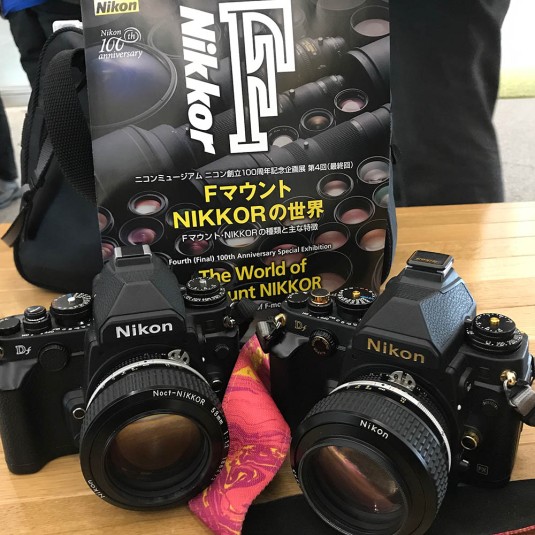 Here’s my Nikon Df together with my Noct-Nikkor 58mm f/1.2 Ai-S. To the right is its twin setup. It has gold accents because it’s a limited edition offering from Nikon. As the flyer at the back says, the exhibit is called “The World of F-mount Nikkor“. I will take you along a virtual tour of the exhibit. Please pardon the poor and blurred (at times) iPhone pictures.
Here’s my Nikon Df together with my Noct-Nikkor 58mm f/1.2 Ai-S. To the right is its twin setup. It has gold accents because it’s a limited edition offering from Nikon. As the flyer at the back says, the exhibit is called “The World of F-mount Nikkor“. I will take you along a virtual tour of the exhibit. Please pardon the poor and blurred (at times) iPhone pictures.
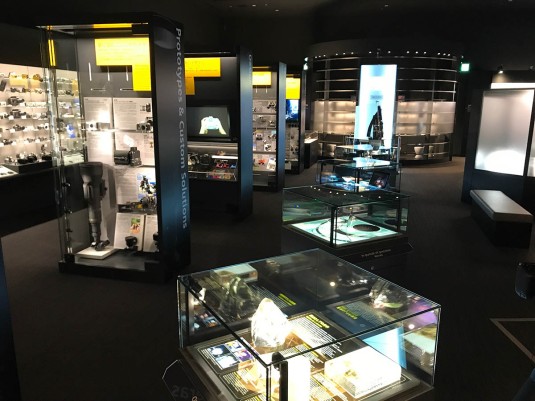 Here’s a picture of some of the exhibits at the museum. They change the theme from time to time and I was unable to cover some of it because I’m a very busy salaryman!
Here’s a picture of some of the exhibits at the museum. They change the theme from time to time and I was unable to cover some of it because I’m a very busy salaryman!
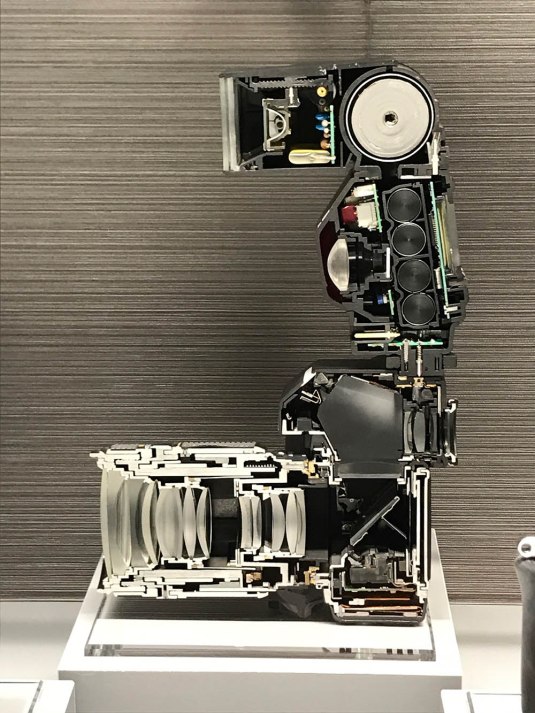 There are many interesting interesting things at the museum such as this one, a Nikon F4 that has been cut in half. The lens is the Zoom-Nikkor 35-70mm f/2.8 AF-D lens.
There are many interesting interesting things at the museum such as this one, a Nikon F4 that has been cut in half. The lens is the Zoom-Nikkor 35-70mm f/2.8 AF-D lens.
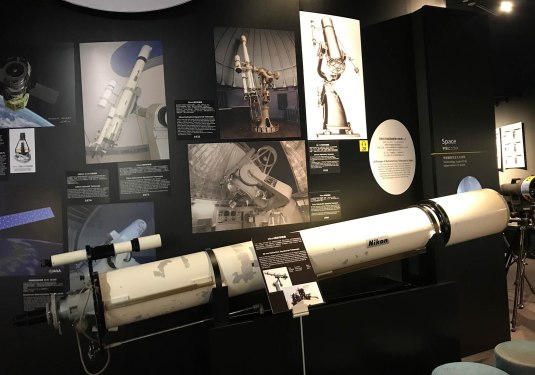 Fancy having this telescope at your study room? Nikon also makes optics for astronomy.
Fancy having this telescope at your study room? Nikon also makes optics for astronomy.
Ok, this is all for the introduction. I just added this portion to give you some context and idea on where the exhibit is being held and if you want to read more about the venue go to my Nikon Museum blog post. If you are new to Nikon and you do not have any idea on what’s happening this year for them then read my 100th Anniversary of Nikon article.
The F-mount:
The F-mount is the star of the exhibit. It was debuted along with the legendary Nikon F in 1959 and has since remained the standard for all Nikkor lenses for the 35mm format. The F-mount has changed a lot through the years but the basic design remained the same. It’s one of the reasons why some people choose Nikon instead of the competition. The appeal of using a lens made from many decades ago on your Nikon DSLR is not only romantic, it is also practical if you already own a collection of Nikkors. I talked to some engineers at Nikon and they told me that they intend to keep the F-mount going. Thank you, Nikon!
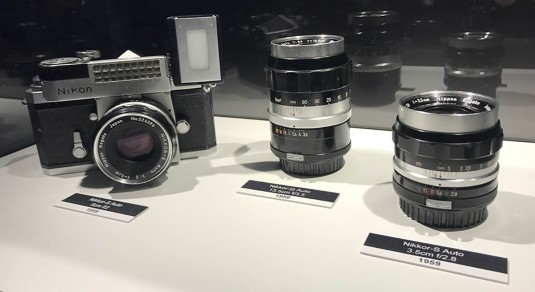 These are the very first lenses that came out with the Nikon F. These lenses are called the “tick-mark” lenses by collectors and are very much sought-after and I own a few of these. There is one lens that’s missing here and that’s the Nikkor-P 10.5cm f/2.5 Auto. I wouldn’t mind having my lens displayed here but Nikon is very strict with accepting lenses for the museum’s exhibits, they don’t want any liabilities when something happens.
These are the very first lenses that came out with the Nikon F. These lenses are called the “tick-mark” lenses by collectors and are very much sought-after and I own a few of these. There is one lens that’s missing here and that’s the Nikkor-P 10.5cm f/2.5 Auto. I wouldn’t mind having my lens displayed here but Nikon is very strict with accepting lenses for the museum’s exhibits, they don’t want any liabilities when something happens.
The F-mount was named after Mr. Fuketa Masahiko (更田正彦) who was an engineer then at Nikon. He was involved in the development of Nikon’s first consumer camera (Nikon I) during the mid-40s up until the Nikon F of 1959. He was the one who drew the gothic F in a piece of paper that has since become synonymous with Nikon’s film cameras. I was told by no other than Mr. Goto Tetsuro (後藤哲朗) himself that Nikon took a lot of time just to decide on what the F-mount should be and at one time, even the Miranda mount was also being considered. He showed us a collection of documents related to the development of the F-mount and unfortunately I didn’t grasp everything due to my poor Japanese! When the F-mount was released, it was considered to be advanced in many ways. The opening was one of the biggest in the industry which makes it able to mount larger lenses with an equally larger rear element. The automatic iris can also be mechanically actuated which was an advanced feature in those times. The bayonet was also tough and it was trivial to mount and remove lenses. These things don’t seem much these days so I hope that I can help you appreciate the F-mount even more with my introduction.
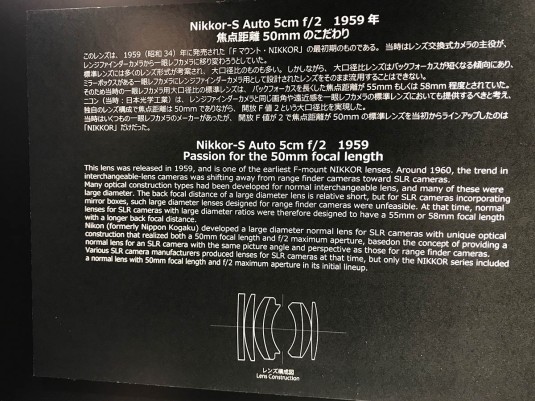 Here’s a writeup on the Nikkor-S 5cm f/2 Auto lens. Sato Haruo shared that in order for it to achieve the much sought-after 50mm focal length, a “magnifier” lens similar to that for old people’s reading glasses was used as the front element. It is not that the lens used the same lens from reading glasses but it just borrowed the concept from it. Back in the day, designing a 50mm for an SLR wasn’t easy because back-focus techniques required for it hasn’t been mastered yet. What made it more difficult was the Nikon F’s mirror, it has a big flapping mirror in order to give you 100% view of the frame. This was one of the very reason why the Nikon F was chosen by NASA as a space camera apart from its durability.
Here’s a writeup on the Nikkor-S 5cm f/2 Auto lens. Sato Haruo shared that in order for it to achieve the much sought-after 50mm focal length, a “magnifier” lens similar to that for old people’s reading glasses was used as the front element. It is not that the lens used the same lens from reading glasses but it just borrowed the concept from it. Back in the day, designing a 50mm for an SLR wasn’t easy because back-focus techniques required for it hasn’t been mastered yet. What made it more difficult was the Nikon F’s mirror, it has a big flapping mirror in order to give you 100% view of the frame. This was one of the very reason why the Nikon F was chosen by NASA as a space camera apart from its durability.
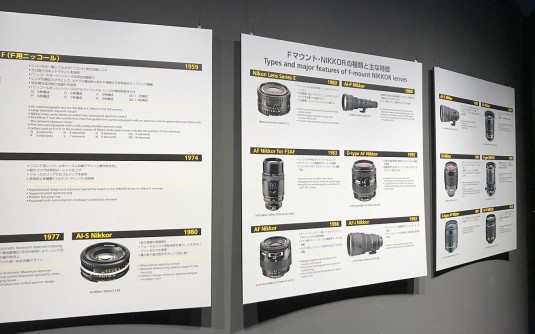 Here are some posters explaining the evolution of the F-mount. The F-mount hasn’t been changed since its debut in 1959, it has pretty much retained the bayonet mount but it has been revised several times in order to keep up with the times. The revisions were done in such a way wherein the bayonet mount stayed the same and the enhancement made did not alter its fundamental design. This is why you can use the vast majority of Nikkors on your Nikon cameras!
Here are some posters explaining the evolution of the F-mount. The F-mount hasn’t been changed since its debut in 1959, it has pretty much retained the bayonet mount but it has been revised several times in order to keep up with the times. The revisions were done in such a way wherein the bayonet mount stayed the same and the enhancement made did not alter its fundamental design. This is why you can use the vast majority of Nikkors on your Nikon cameras!
(Click to enlarge)
Take a closer look at the posters. This should give you and idea on what technologies are implemented on the F-mount. The only physical change that I am aware of that was done with the bayonet was when Nikon implemented the screw-drive AF feature the bayonet’s radius had to be widened a bit. This is why some very early Nikkors can’t be mated to a more recent Nikon camera from the mid-80s to the present.
I hope that I have enlightened you about the F-mount in this section. It was important to write a primer on the F-mount for people who aren’t familiar with its background just so that you know why this is such an important part of Nikon’s heritage and why we are all celebrating it. The F-mount stayed relevant up to this day and it’s a testament to its design and engineering. Lens mounts come and go for other brands but the F-mount is forever!
Normal Primes:
We’re now going to look at each section of the exhibit! We’re going to start with the most common lens type and that’s normal prime lenses. Nikon made plenty of great lenses and some of their best ones fall in this category like the great Noct-Nikkor 58mm f/1.2 Ai-S. I’m going to bet that majority of my readers start with a normal prime lens. They are useful and you can even build an entire portfolio from just one of these.
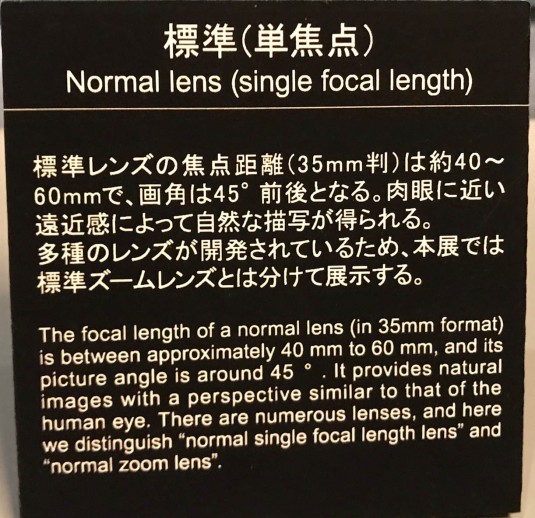 Here’s what a normal lens is according to Nikon. The key to the popularity of the normal lenses is how natural the perspective looks. These are usually sold as “kit-lenses” back in the day and has since been replaced by the cheap normal zoom which is more useful for beginners because you have more focal lengths to choose with instead of a prime lens.
Here’s what a normal lens is according to Nikon. The key to the popularity of the normal lenses is how natural the perspective looks. These are usually sold as “kit-lenses” back in the day and has since been replaced by the cheap normal zoom which is more useful for beginners because you have more focal lengths to choose with instead of a prime lens.
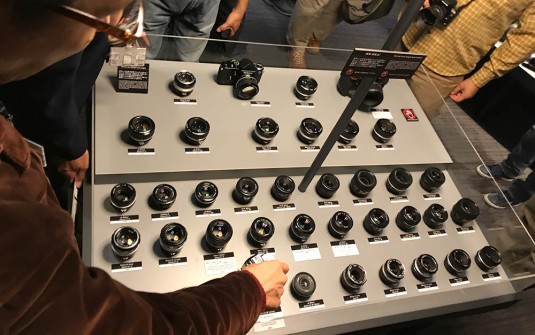 This table shows all of Nikon’s F-mount normal primes. I cannot find anything missing in this table and if there are any they’re probably exotic lenses or special lenses made for a single task like the UV-Nikkors. There were many interesting stories told about these but I wasn’t paying attention! We discussed Nikon’s coating technology back in the old days like how and when the transition of dip-coating to vapor-deposition happened. We also talked about Nikon’s lens development cycle for normal lenses and it takes about 1.5-2yrs to develop a normal prime from design to production.
This table shows all of Nikon’s F-mount normal primes. I cannot find anything missing in this table and if there are any they’re probably exotic lenses or special lenses made for a single task like the UV-Nikkors. There were many interesting stories told about these but I wasn’t paying attention! We discussed Nikon’s coating technology back in the old days like how and when the transition of dip-coating to vapor-deposition happened. We also talked about Nikon’s lens development cycle for normal lenses and it takes about 1.5-2yrs to develop a normal prime from design to production.
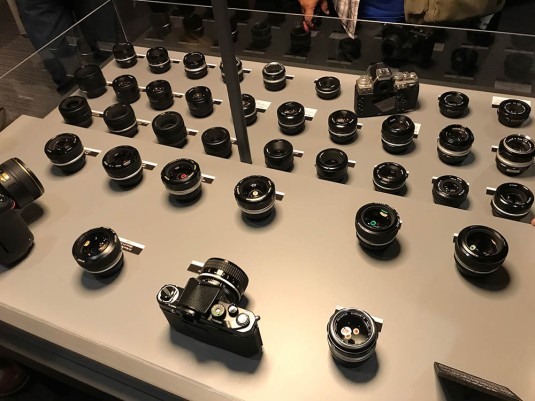 Here’s another view. I am in Nikkor heaven! Keep your “72 virgins”, I want my Nikkors!
Here’s another view. I am in Nikkor heaven! Keep your “72 virgins”, I want my Nikkors!
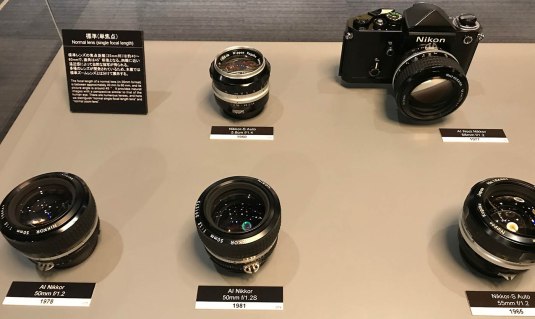 Here are some of Nikon’s normal primes. The Nikkor 50mm f/1.2 Ai-S you see at the front is a very good lens and is considered to be the ultimate 50mm lens by some people. If you want a cheap but great super fast lens then the Nikkor-S.C 55mm f/1.2 on the right may be your lens. The Noct-Nikkor 58mm f/1.2 Ai-S mounted on the Nikon F2 is a legendary lens. It’s not cheap and collectors have raised its price to unrealistic levels now. Finally, there’s the humble Nikkor-S 5.8cm f/1.4 Auto lens to the top. It’s a special lens for people who are into the “old look” and is one of my favorite lenses. It’s also a historically significant lens
Here are some of Nikon’s normal primes. The Nikkor 50mm f/1.2 Ai-S you see at the front is a very good lens and is considered to be the ultimate 50mm lens by some people. If you want a cheap but great super fast lens then the Nikkor-S.C 55mm f/1.2 on the right may be your lens. The Noct-Nikkor 58mm f/1.2 Ai-S mounted on the Nikon F2 is a legendary lens. It’s not cheap and collectors have raised its price to unrealistic levels now. Finally, there’s the humble Nikkor-S 5.8cm f/1.4 Auto lens to the top. It’s a special lens for people who are into the “old look” and is one of my favorite lenses. It’s also a historically significant lens
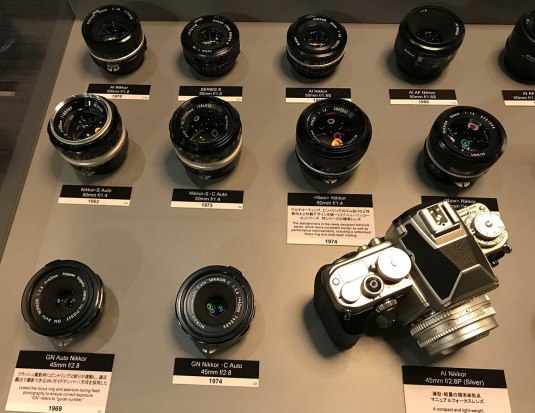 Here more examples of normal primes. The GN Auto-Nikkor 45mm f/2.8 at the front is the only lens in its category. Its aperture ring and focusing ring can be coupled and it enables you to automatically set your lens’ aperture as you focus in or out. This was useful before automatic exposure for flash guns has been introduced. It is now obsolete but it can still be useful for street photographers who prefer to set their flash guns manually. To do this, the focusing ring has to turn the other way and it’s the only Nikkor that does this! To the top is the Nikkor-S 50mm f/1.4, it was a breakthrough when it came out and is still a good lens to use today. It may not be topping the chart tests but it’s still very capable! The tiny Nikkor 50mm f/1.8 Ai-S at the top is one of the smallest Nikkors you can find but it’s very a very good lens. The AF-Nikkor 50mm f/1.8 at the top corner was once a must-have lens for everybody. It’s cheap but the performance is very good! I know few people who never owned this lens or any of its variants which there are many.
Here more examples of normal primes. The GN Auto-Nikkor 45mm f/2.8 at the front is the only lens in its category. Its aperture ring and focusing ring can be coupled and it enables you to automatically set your lens’ aperture as you focus in or out. This was useful before automatic exposure for flash guns has been introduced. It is now obsolete but it can still be useful for street photographers who prefer to set their flash guns manually. To do this, the focusing ring has to turn the other way and it’s the only Nikkor that does this! To the top is the Nikkor-S 50mm f/1.4, it was a breakthrough when it came out and is still a good lens to use today. It may not be topping the chart tests but it’s still very capable! The tiny Nikkor 50mm f/1.8 Ai-S at the top is one of the smallest Nikkors you can find but it’s very a very good lens. The AF-Nikkor 50mm f/1.8 at the top corner was once a must-have lens for everybody. It’s cheap but the performance is very good! I know few people who never owned this lens or any of its variants which there are many.
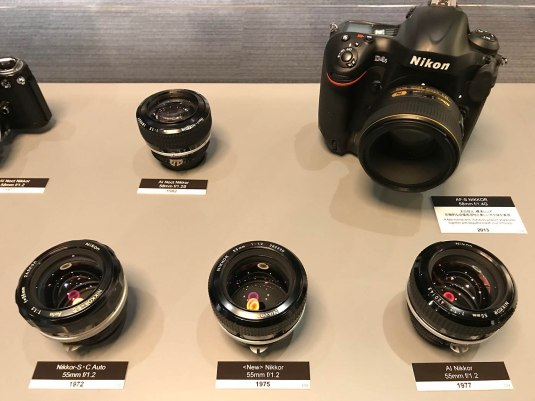 Again, you see another Noct-Nikkor 58mm f/1.2 Ai-S at the top of the picture. The bottom lens is the New Nikkor 55mm f/1.2 and it’s just a cosmetic upgrade of its predecessor. The 55/1.2 family of lenses is considered by many as the “poor man’s Noct” because the focal length and speed is not too-different. They are just as good in some scenarios wide-open.
Again, you see another Noct-Nikkor 58mm f/1.2 Ai-S at the top of the picture. The bottom lens is the New Nikkor 55mm f/1.2 and it’s just a cosmetic upgrade of its predecessor. The 55/1.2 family of lenses is considered by many as the “poor man’s Noct” because the focal length and speed is not too-different. They are just as good in some scenarios wide-open.
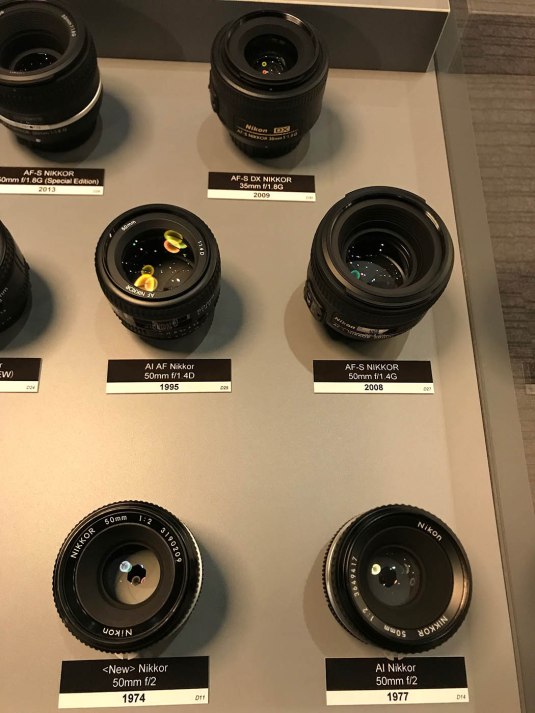 The New-Nikkor 50mm f/2 at the bottom is a very good lens. This lens is capable of giving you a “painterly” rendering of your background when given the correct variables. All of Nikon’s 50/2 and 50/1.8 family of lenses offer exceptional value and all are great when in comes to bokeh and sharpness, you can never go wrong with any of them. I can’t say the same for Nikon’s 50/1.4 lens family, some of them suck like the ones you see in the middle of the picture. This is not to say that they are useless, I just expect more from these.
The New-Nikkor 50mm f/2 at the bottom is a very good lens. This lens is capable of giving you a “painterly” rendering of your background when given the correct variables. All of Nikon’s 50/2 and 50/1.8 family of lenses offer exceptional value and all are great when in comes to bokeh and sharpness, you can never go wrong with any of them. I can’t say the same for Nikon’s 50/1.4 lens family, some of them suck like the ones you see in the middle of the picture. This is not to say that they are useless, I just expect more from these.
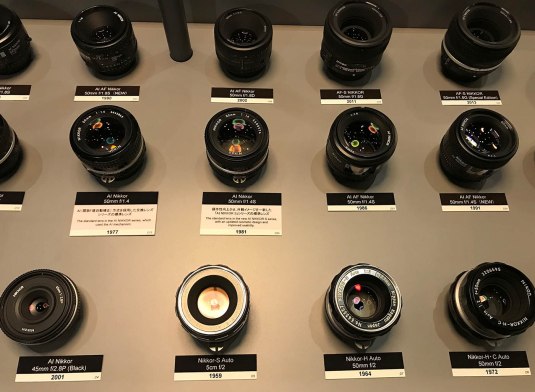 Here’s the rest of the pack. Nikon has probably made around 50 of these for the F-mount alone. They remain popular despite the fact that zoom lenses are getting much better at the present compared to how they were just some 30 years ago.
Here’s the rest of the pack. Nikon has probably made around 50 of these for the F-mount alone. They remain popular despite the fact that zoom lenses are getting much better at the present compared to how they were just some 30 years ago.
That’s it for part 1, I hope that you enjoyed this one check out part 2! In part 2, we’ll be looking into other types of prime lenses including the exotic lenses that you do not see, know or hear about most of the time! See you guys next time and please don’t forget to follow us on Facebook (Classic Nikon Maintenance), Ric.
Help Support this Blog:
Maintaining this blog requires money to operate. If you think that this site has helped you or you want to show your support by helping with the upkeep of this site, you can simple make a small donation to my paypal.com account (richardHaw888@gmail.com). Money is not my prime motivation for this blog and I believe that I have enough to run this but you can help me make this site (and the companion facebook page) grow.
Helping support this site will ensure that this will be kept going as long as I have the time and energy for this. I would appreciate it if you just leave out your name or details like your country and other information so that the donations will totally be anonymous it is at all possible. This is a labor of love and I intend to keep it that way for as long as I can. Ric.

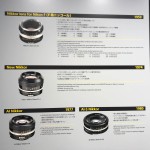
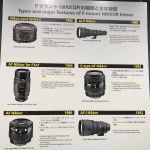
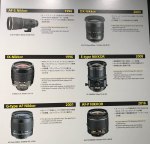
Oct 11, 2020 @ 04:22:16
I am actually glad to glance at this webpage posts which contains tons of valuable
data, thanks for providing such data.